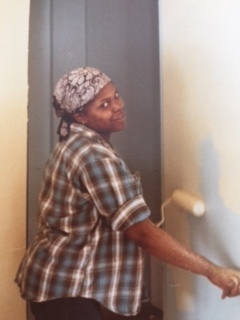As we begin a new year, many of us have set intentions we hope to attain. Often, these intentions are aimed at making our minds grow in a new way, test the limits of our bodies, and involve some degree of discipline. Perhaps we aim to learn a new instrument or run a 10k. You know that feeling when you learn your first song or cross the finish line of your first race?! This is a feeling the children of Nia House have the opportunity to experience just about daily.
Challenges and setting goals are a part of the daily life of the older children at Nia House. Each day, children are emboldened to begin works that offer a challenge. I recently asked some of the older children- “What do challenges feel like?” Sophia replied, “Challenges are really tricky and sometimes it feels like I can’t finish.” Talula chimed in, “Challenges, like reading books, are hard.”
I followed up with the inquiry, “What makes a work a challenge?” Etienne said, “The pieces of the work.” Sophia added that “a challenging work sometimes will take many days.”
“Why,” I probed, “do we do challenging work?” Jun emphatically answered, “Because we like to learn about stuff.” Daphne agreed, “We need to learn.” Matiz shared, “We like them because they are hard. I like to do hard things because then I can learn them.” Etienne embellished on this idea, “They are good for your body and good for your heart.” Talula concluded, “Challenges help your brain think.”
Finally, I asked, “How do you feel when you finish a challenge?” Jun said, “I feel like I can do the whole thing.” Sophia crowed, “I feel proud.” Matiz echoed this sentiment, “It feels good. I am glad when I am done.” Etienne reflected, “You work on a challenge everyday until you finish. But you can have breaks. When you are done, you feel happy and good.” In The Discovery of the Child, Dr. Maria Montessori noticed this in children’s work, “A child who has become master of his acts through long and repeated exercises, and who has been encouraged by the pleasant and interesting activities in which he has been engaged, is a child filled with health and joy and remarkable for his calmness and discipline." (92)
In this reflection, children named that challenging work can be daunting, tricky, and hard. The work is relentless and requires breaks. Whether it is tracing and labeling each country of Africa or completing a book of subtraction, there is a knowing that even when it feels hard, challenges carry the benefits of learning and nurturing your being. Through work, comes a feeling of accomplishment, pride, and mastery. "The satisfaction which they find in their work has given them a grace and ease like that which comes from music." (Discovery 87)
Though not necessarily with the same cognizance nor with the same identifiable aim, the youngest of children too are engaged in achieving goals, repeating, practicing and mastering important life skill sets- walking, climbing, cutting, or talking. The way some of the younger children go about their challenges and goals often looks a little different and can be perplexing to an adult. Montessori reflects,
The child of this age sets out to do a certain task, perhaps an absurd one to adult reasoning, but this matters not at all; he must carry out the activity to its conclusion. There is a vital urge to completeness of action, and if the cycle of this urge is broken, it shows in deviations from normality and lack of purpose. Much importance attaches now to this cycle of activity, which is an indirect preparation for future life. All through life men prepare for the future indirectly, and it is remarked of those who have done something great that there has been a previous period of something worked for, not necessarily on the same line as the final work, but along some line there has been an intense effort which has given the necessary preparation of the spirit, and such effort must be fully expanded - the cycle must be completed. Adults therefore should not interfere to stop any childish activity however absurd, so long as it is not too dangerous to life and limb! The child must carry out his cycle of activity. (Education of a New World, 45)
Montessori and the elder children of Nia House name the fruitfulness of completing their challenge. Though we may not always understand the nature of the aim, task, or challenge that the youngest of our children are undertaking, we can trust that their urge is one that will aide toward indirect preparation for life and that the sensation of completion, as Etienne poignantly described, makes one feel “happy and good”, it is a “preparation of the spirit.”
As we support the children in realizing their challenges, aide them in setting goals, and honor their achievements, we wish everyone all the best at, in the words of Dr. Maria Montessori, finding a challenge in which “such work is fascinating, irresistible, and it raises [us] above deviations and inner conflicts… gifted with such an extraordinary power as to enable [us] to rediscover the instinct of their species in the patterns of their own individuality.” (The Secret of Childhood, 196)
Montessori, Maria. Discovery of the Child. Fides Publishers, 1967.
Montessori, Maria. Education of the New World. Schocken Books, 1964.
Montessori, Maria. The Secret of Childhood. Ballantine Books, 1972.















































































































